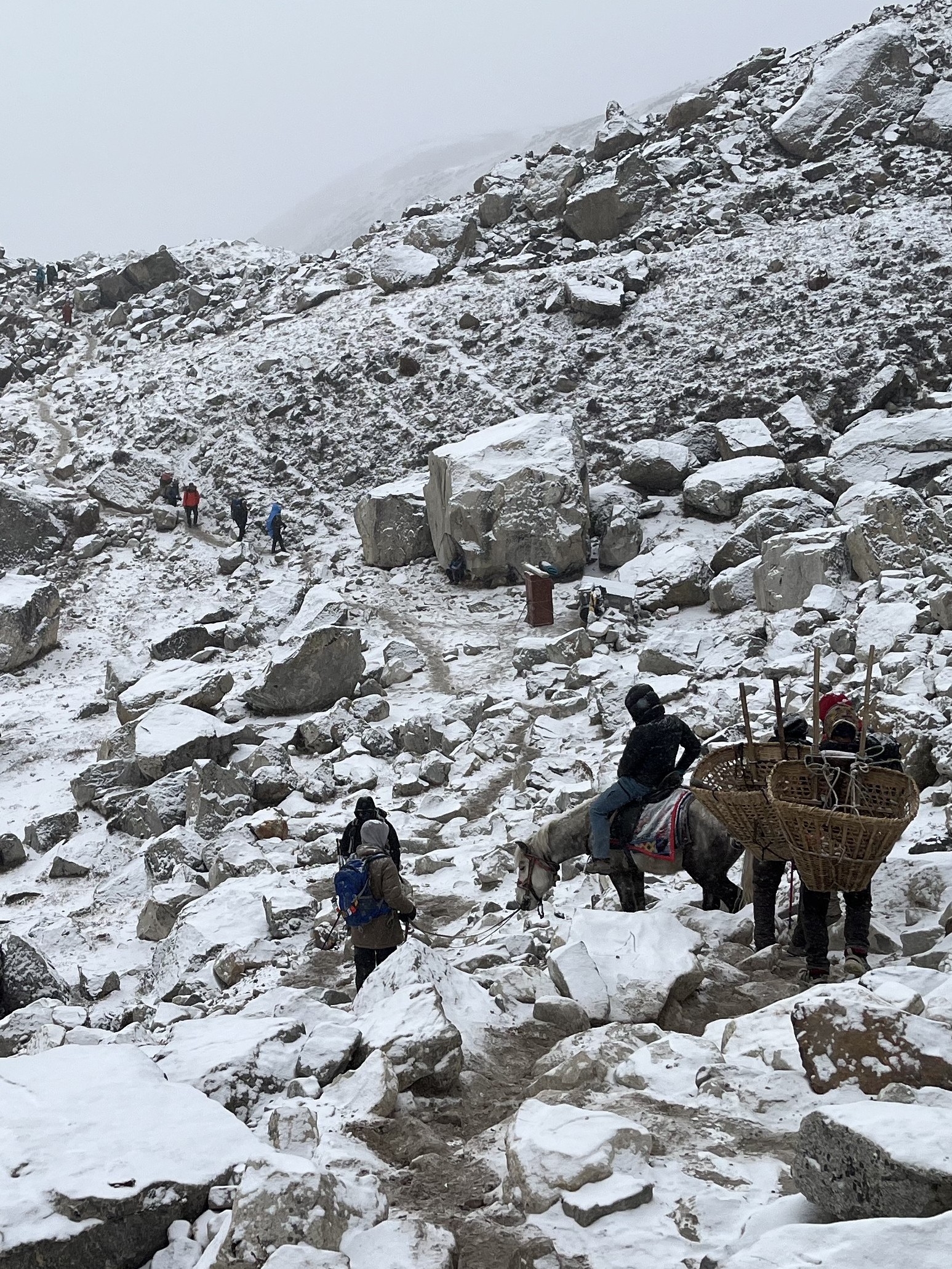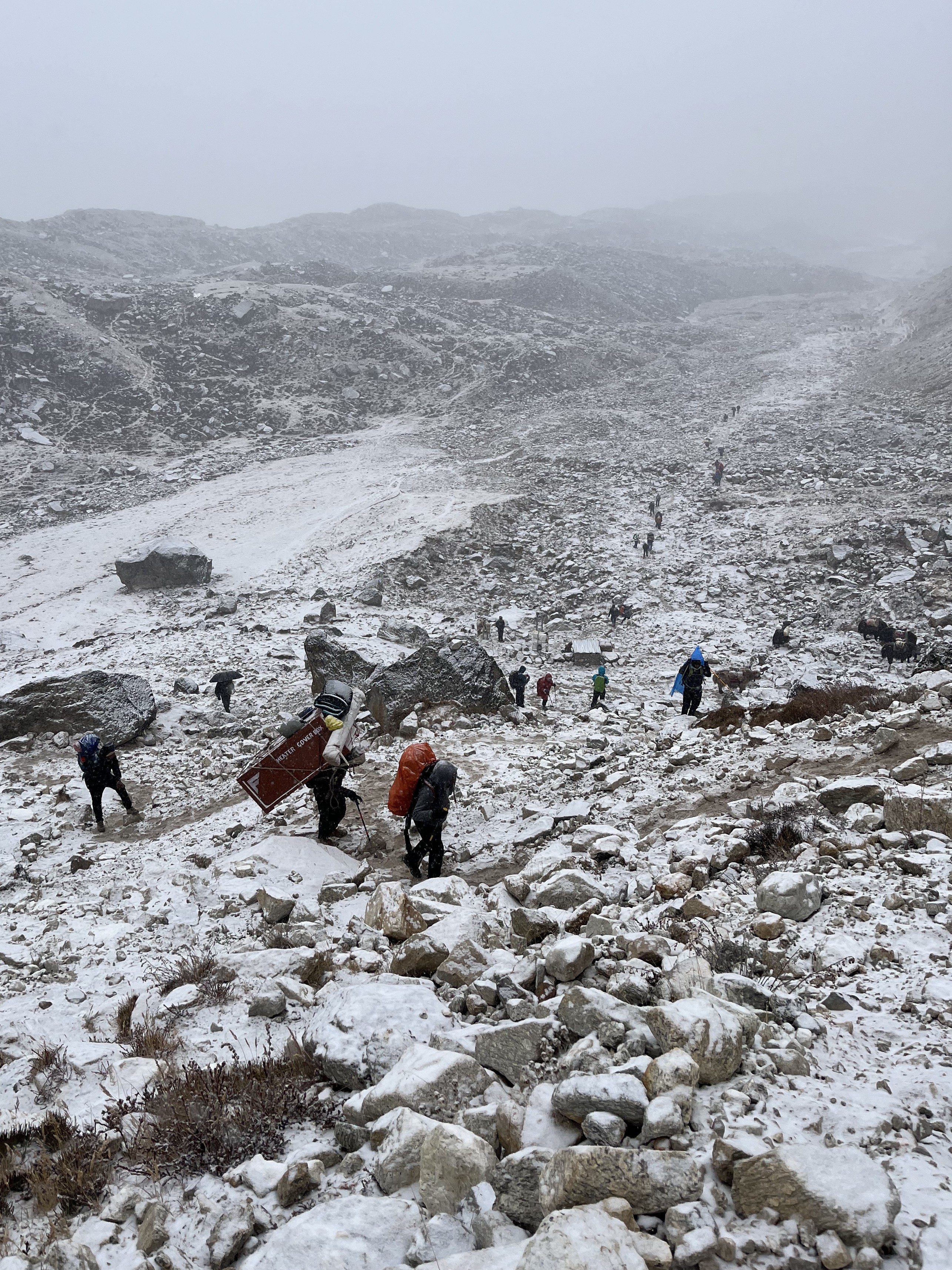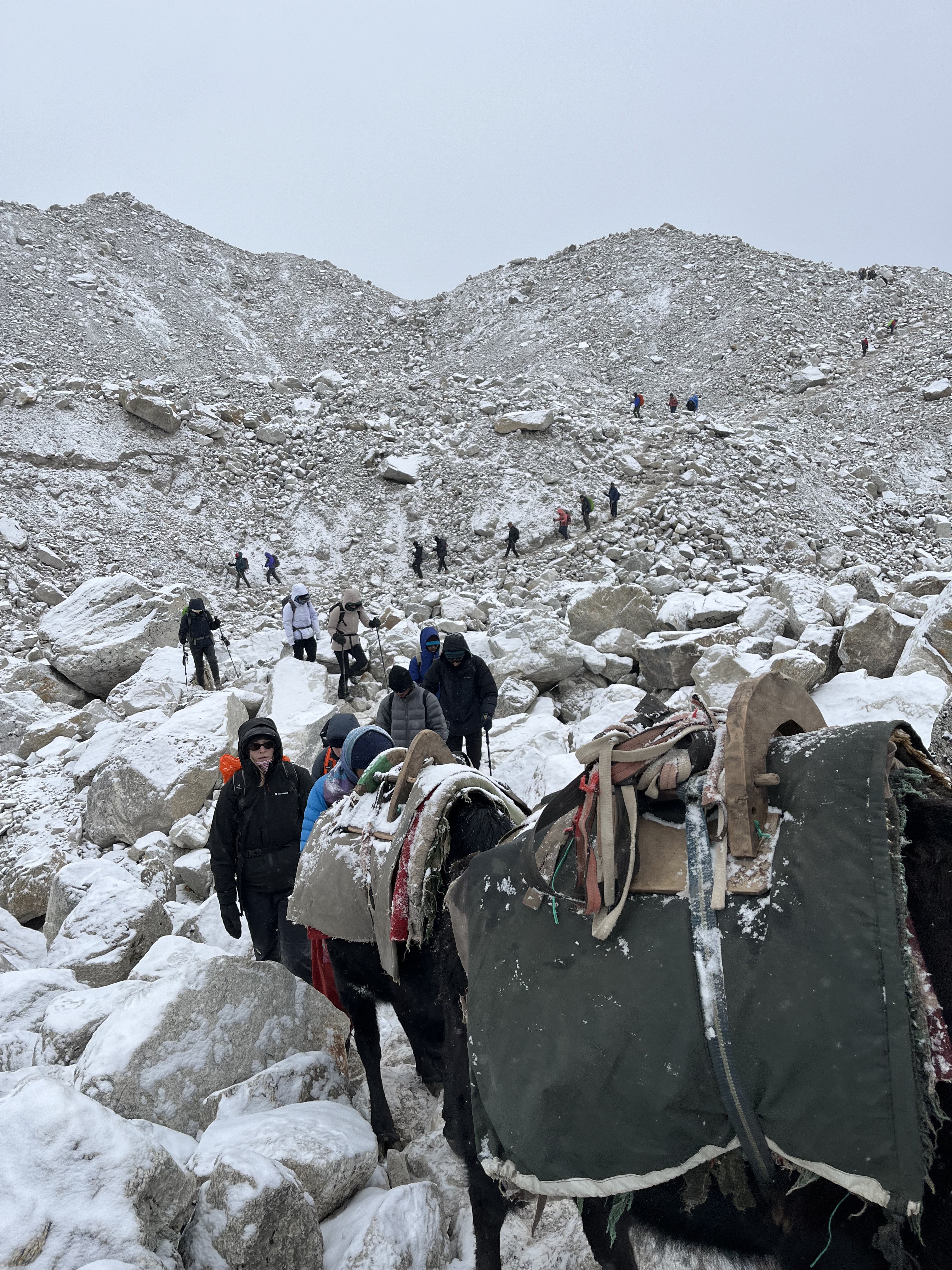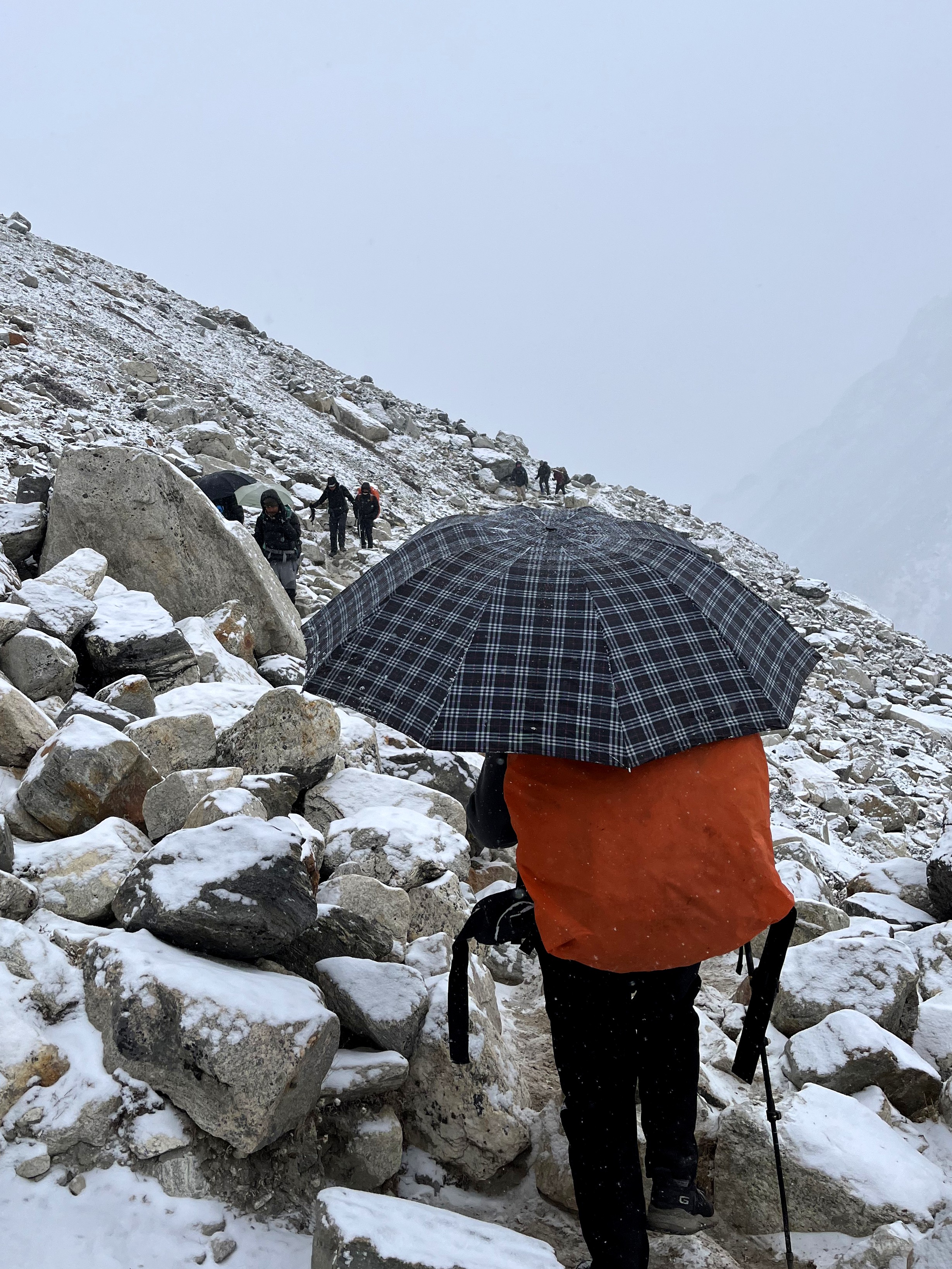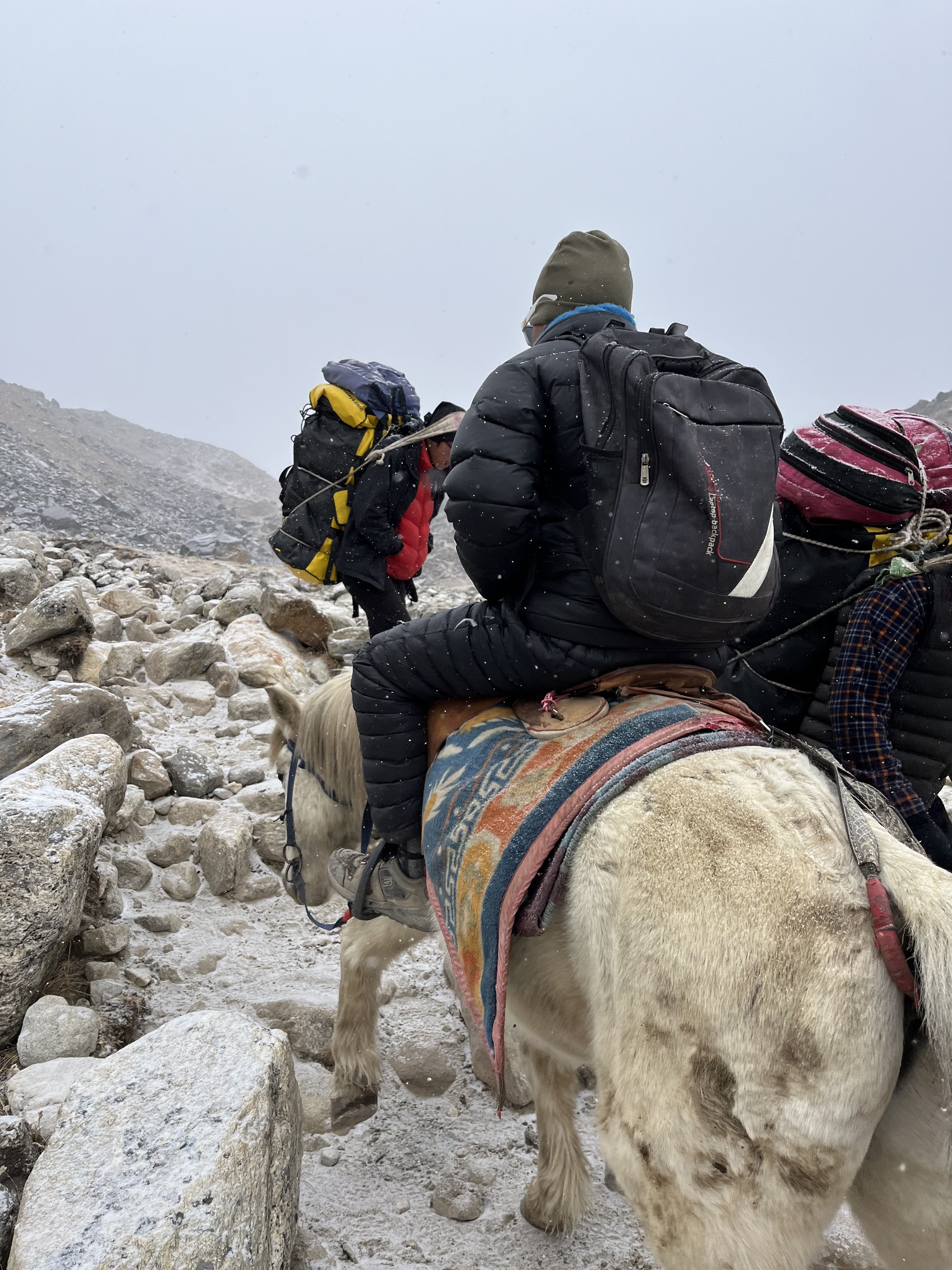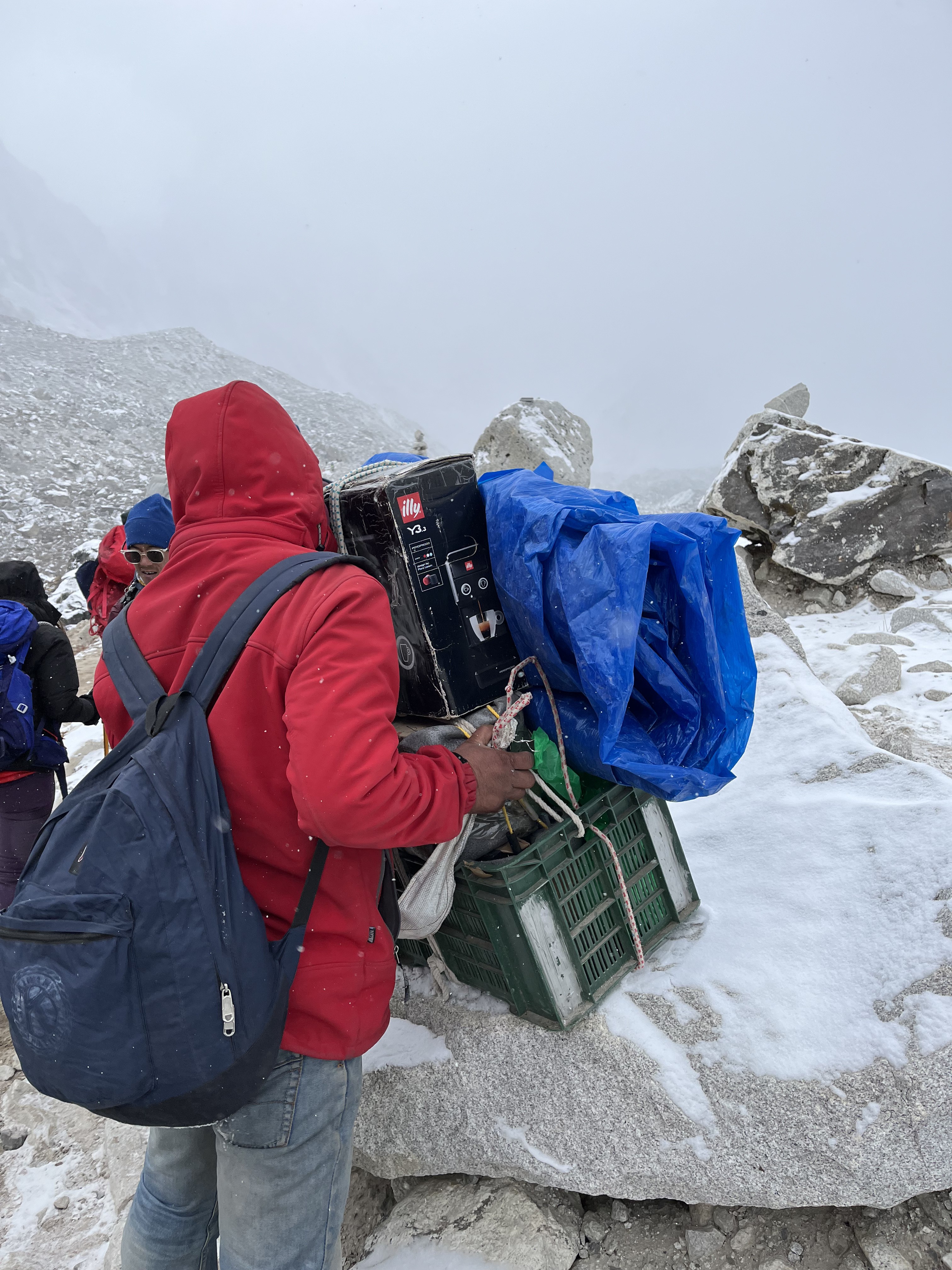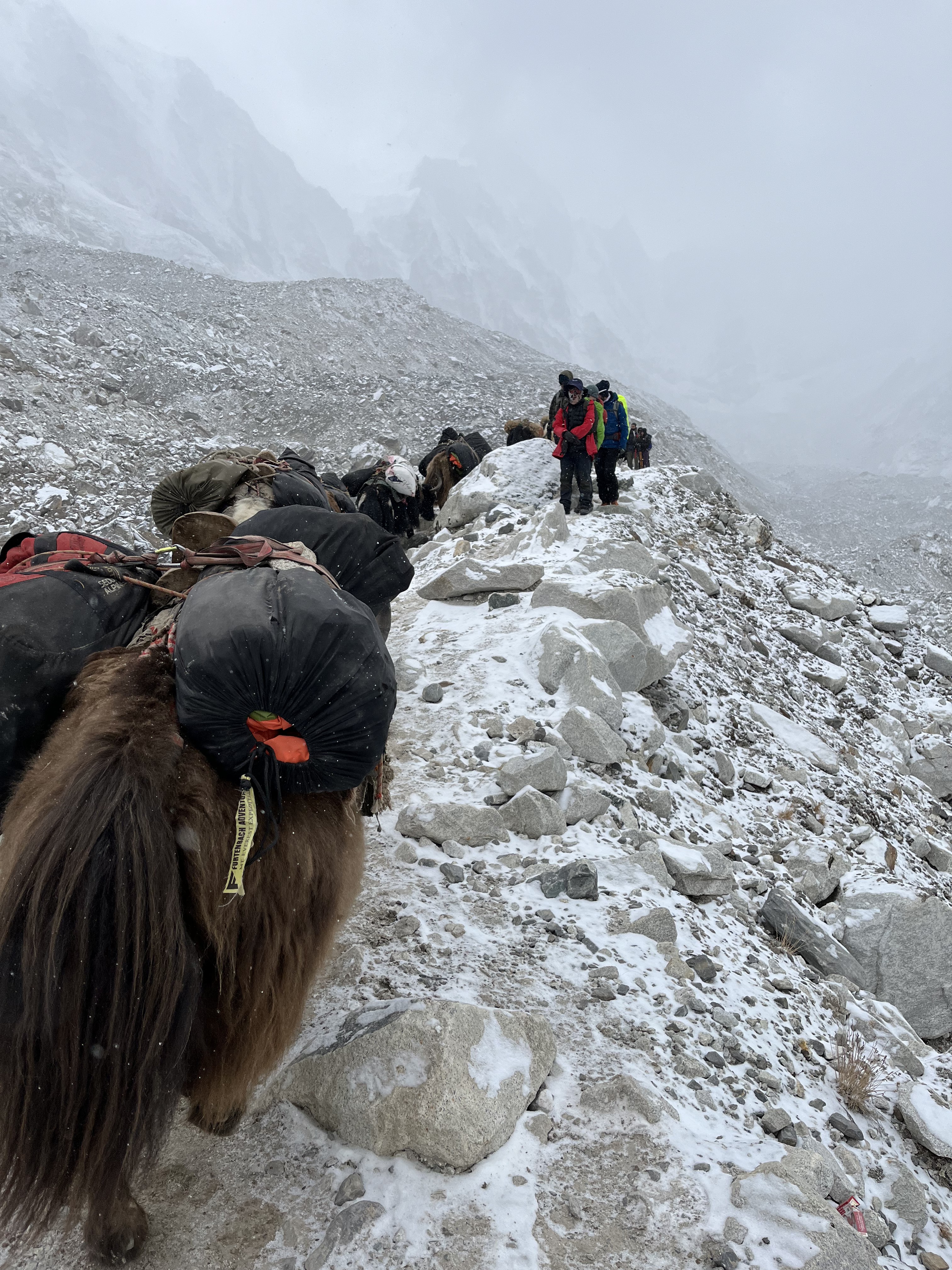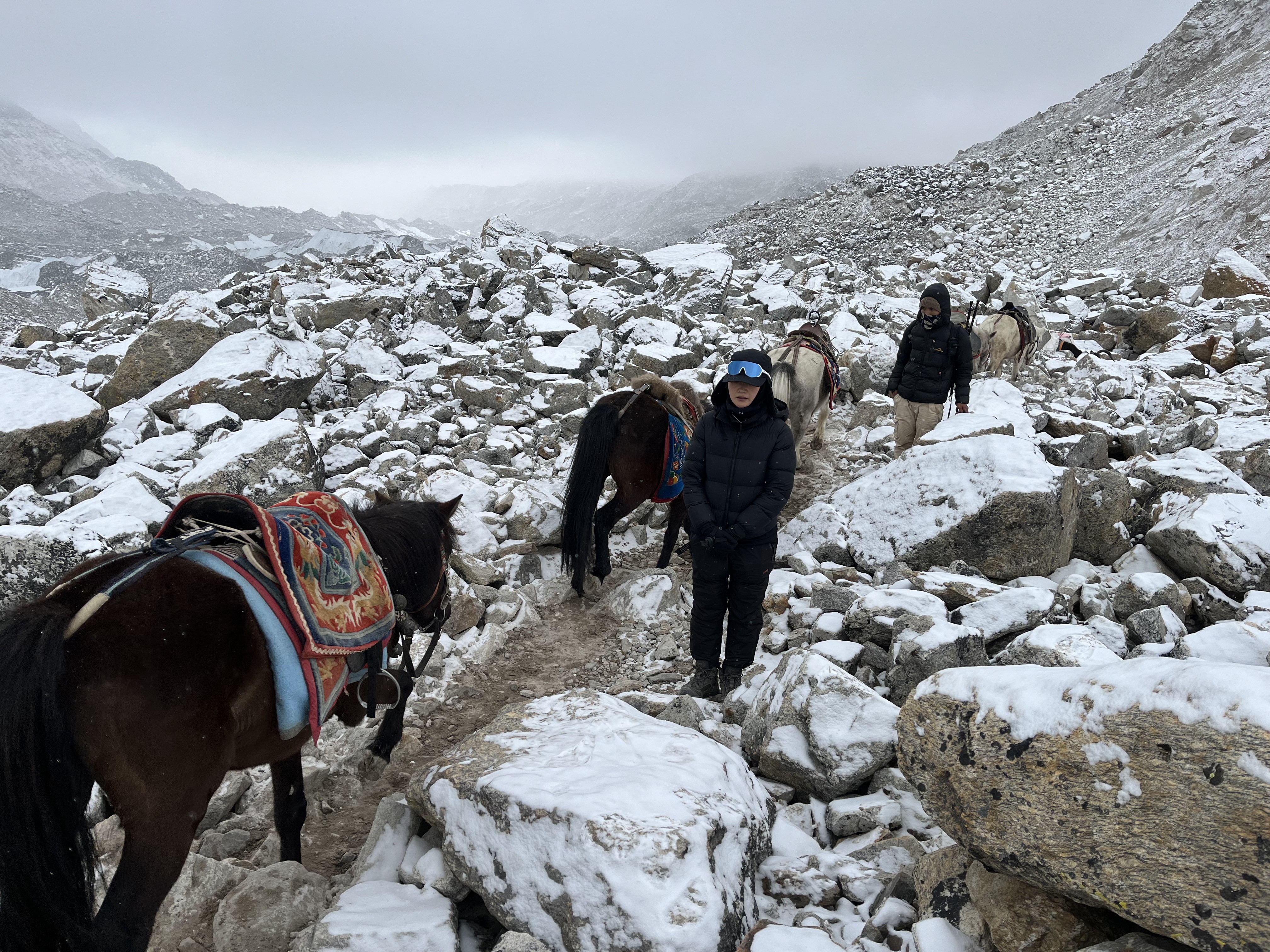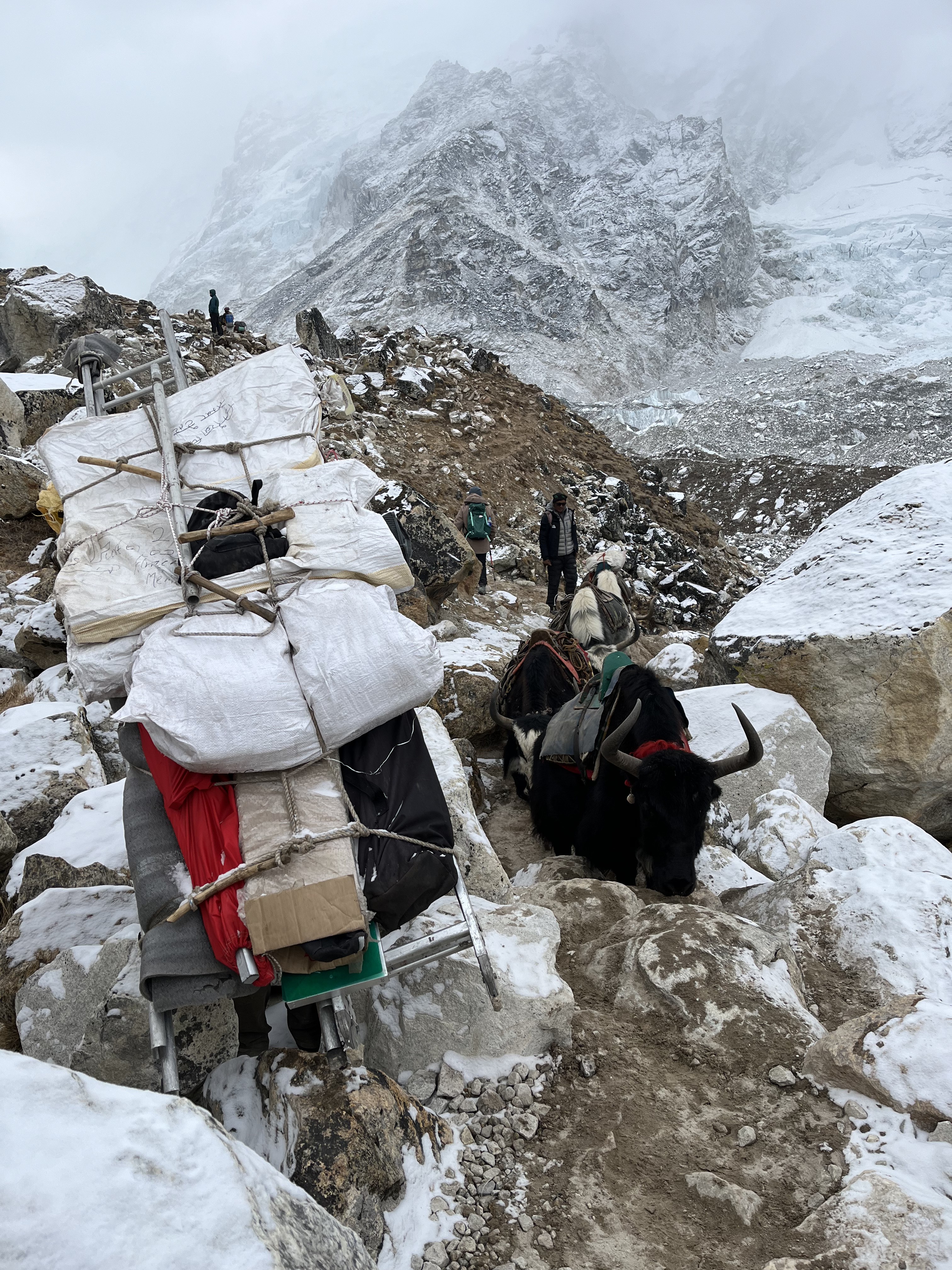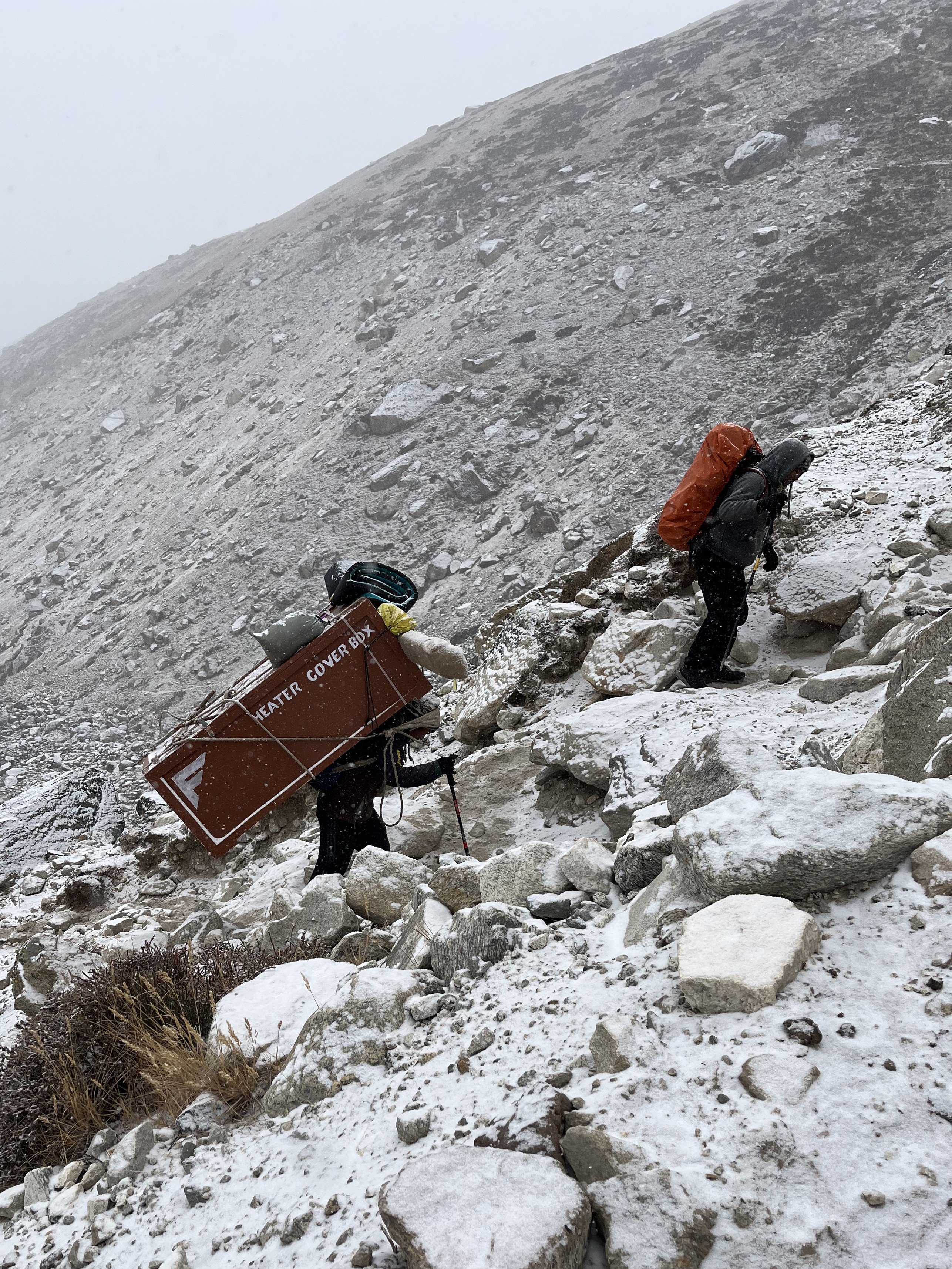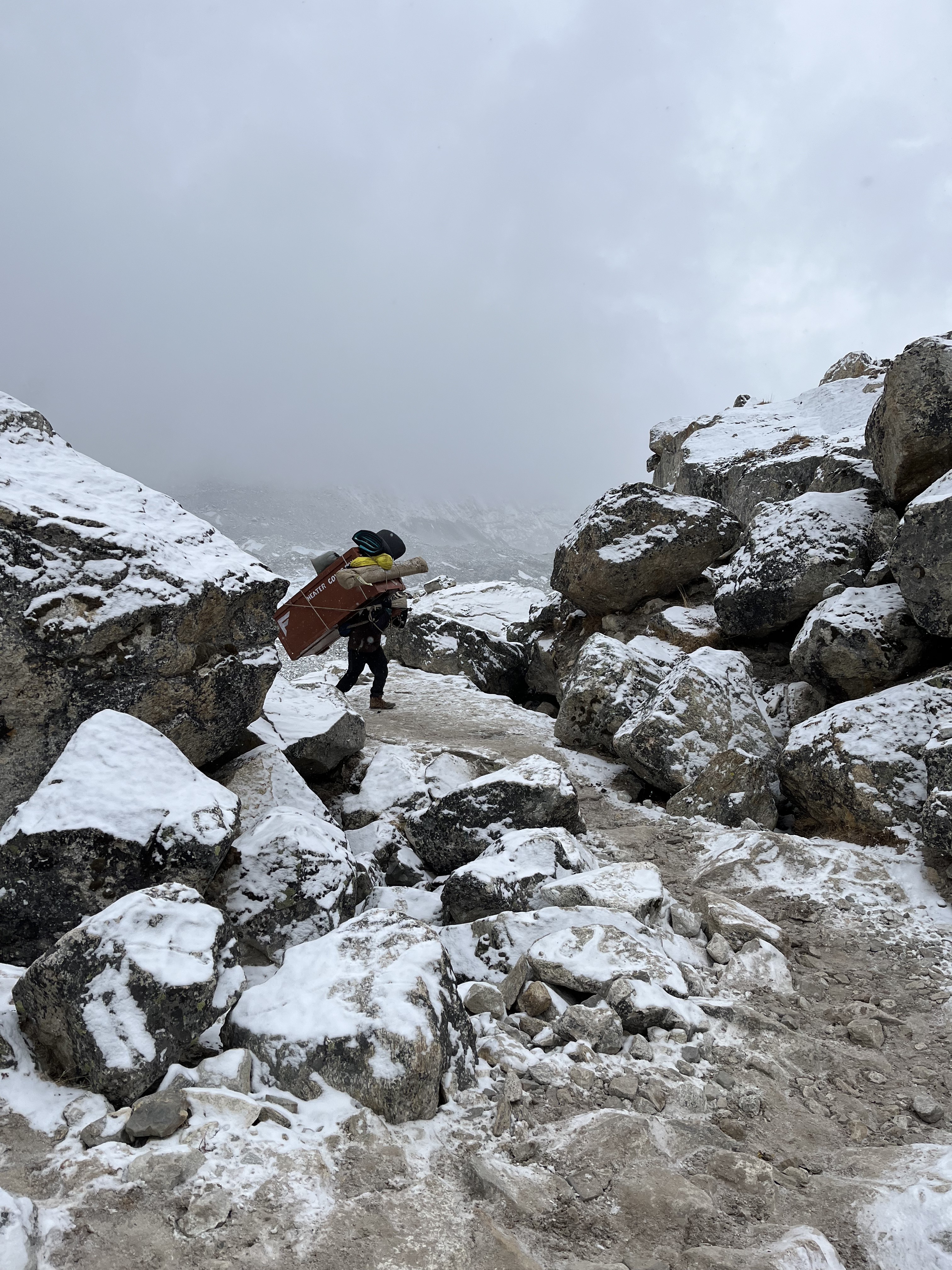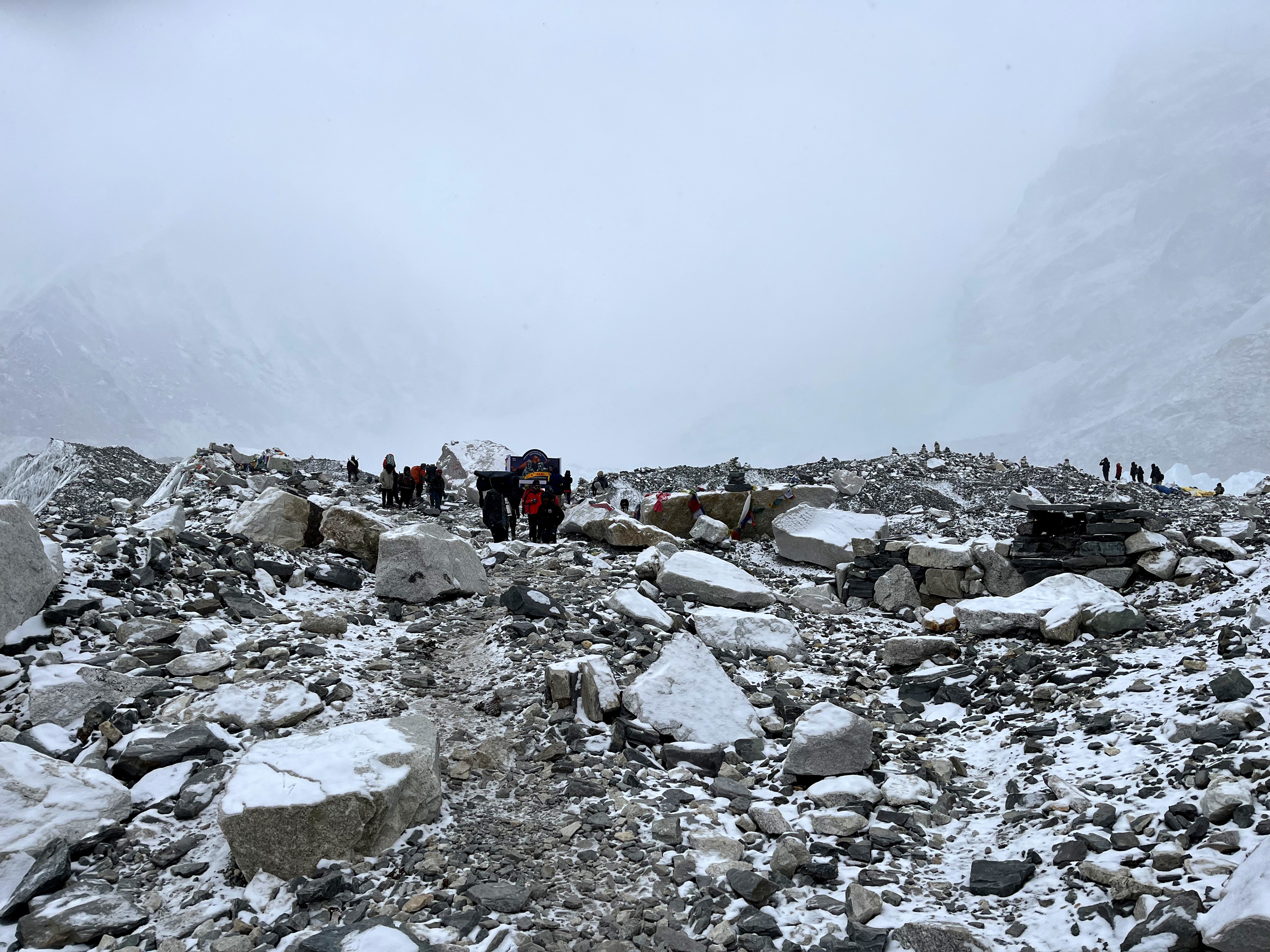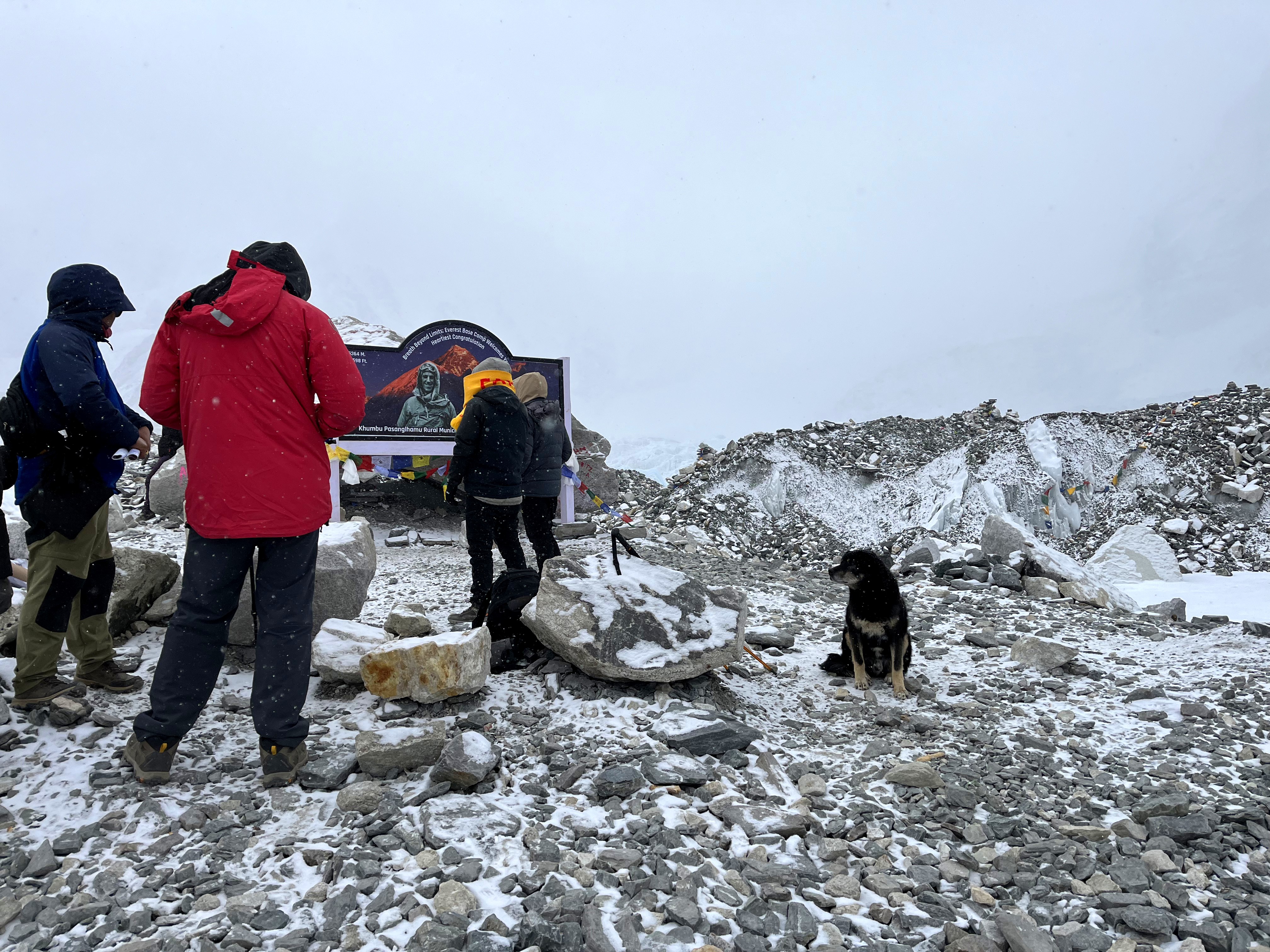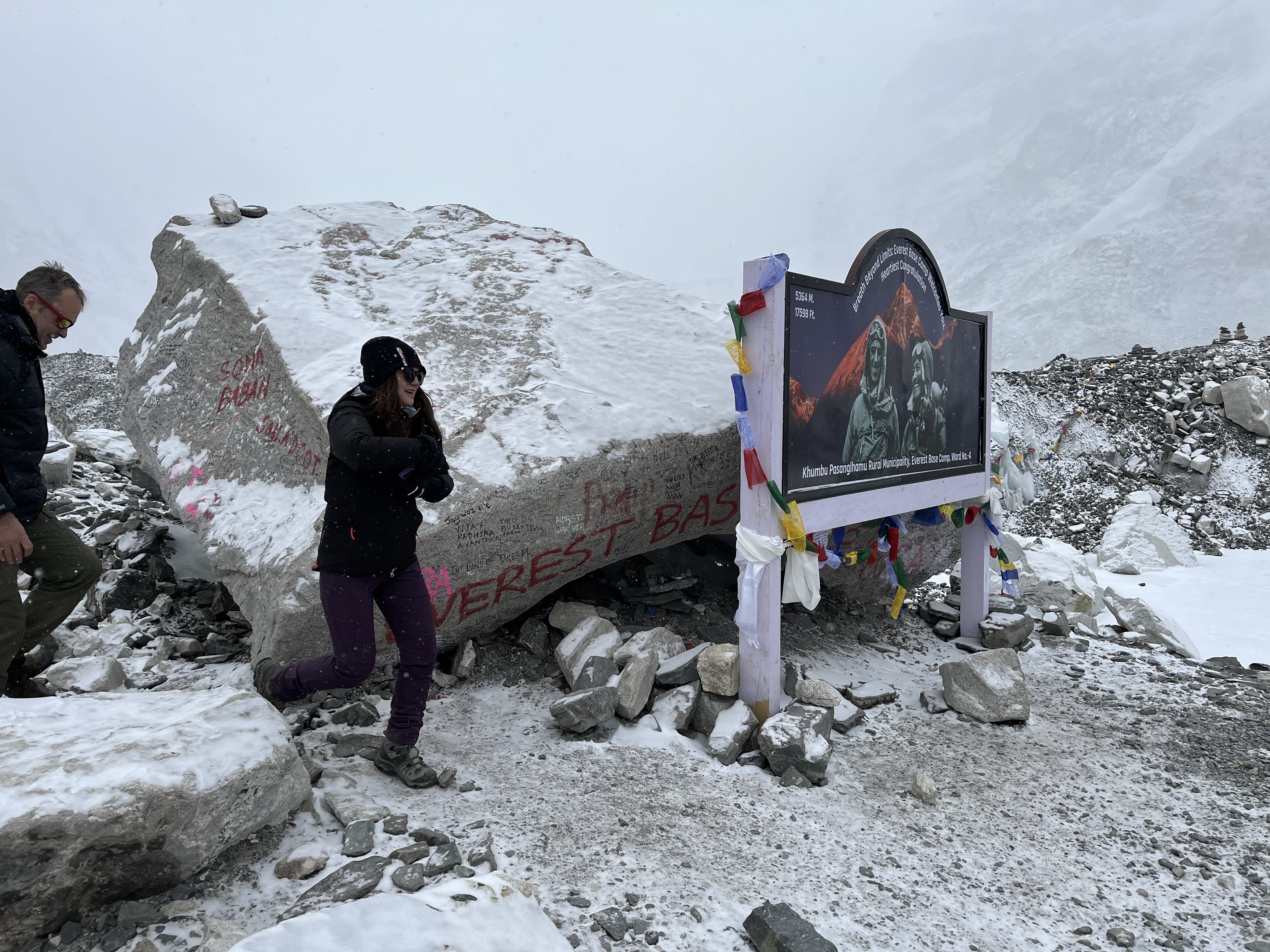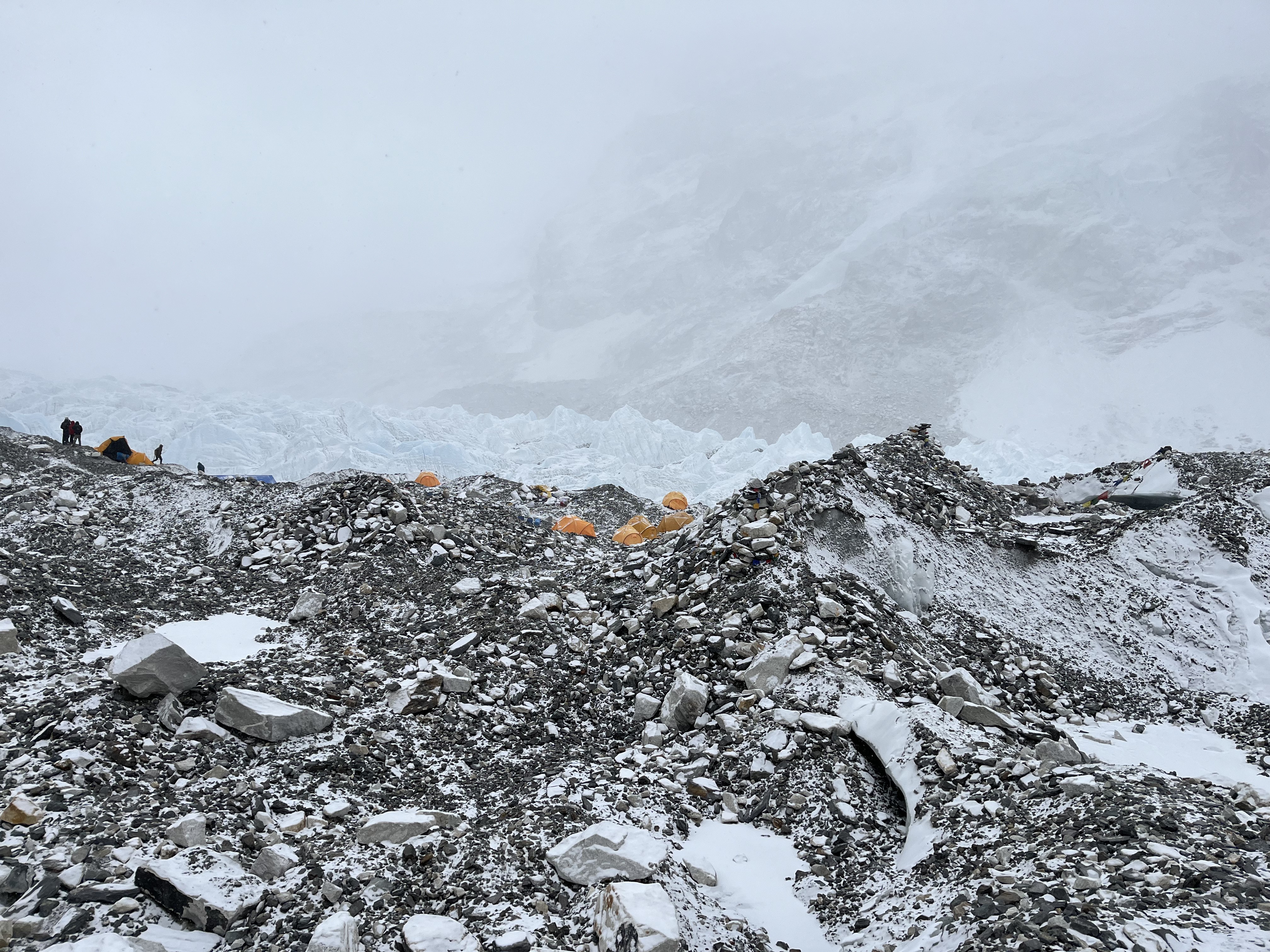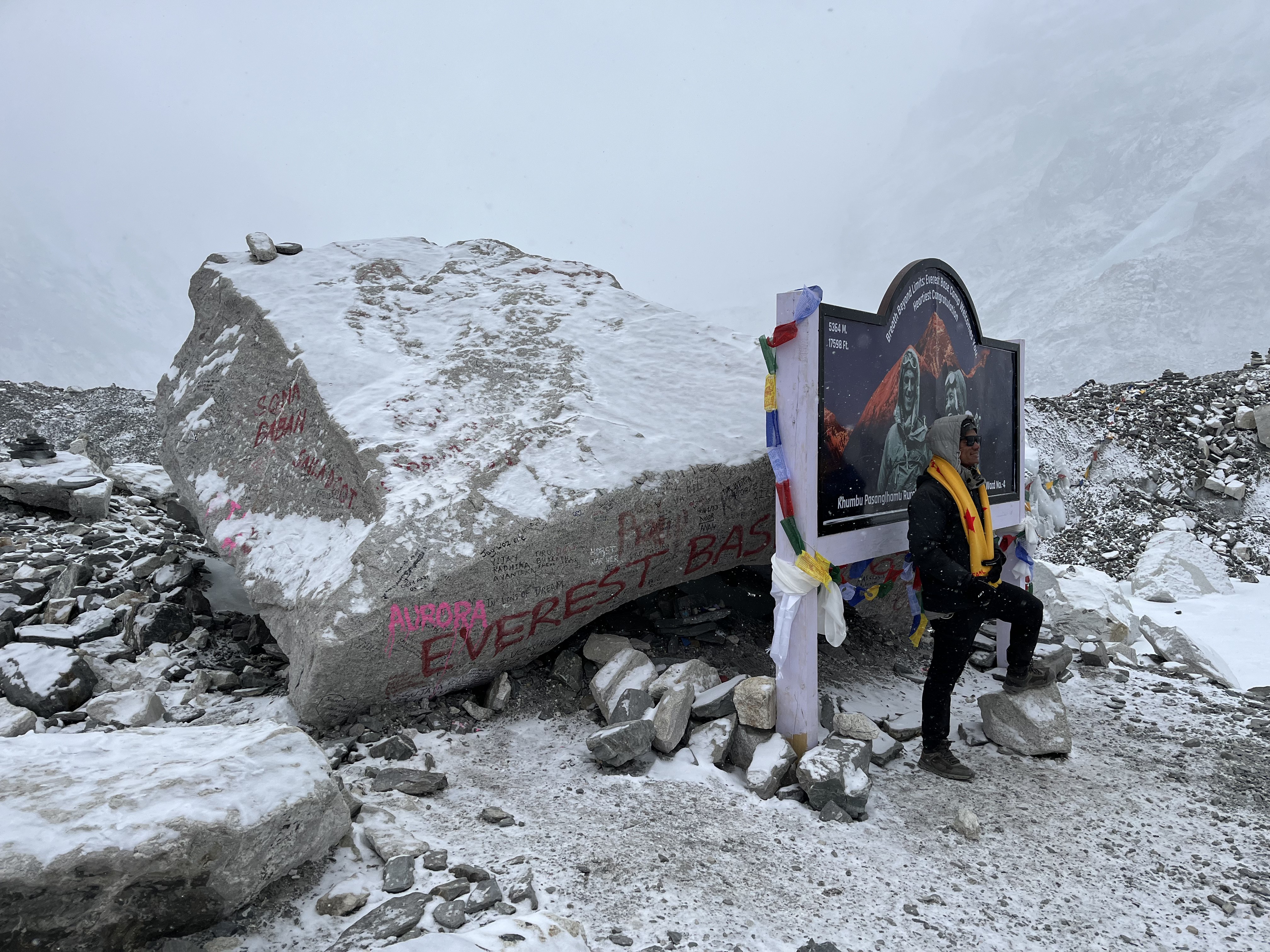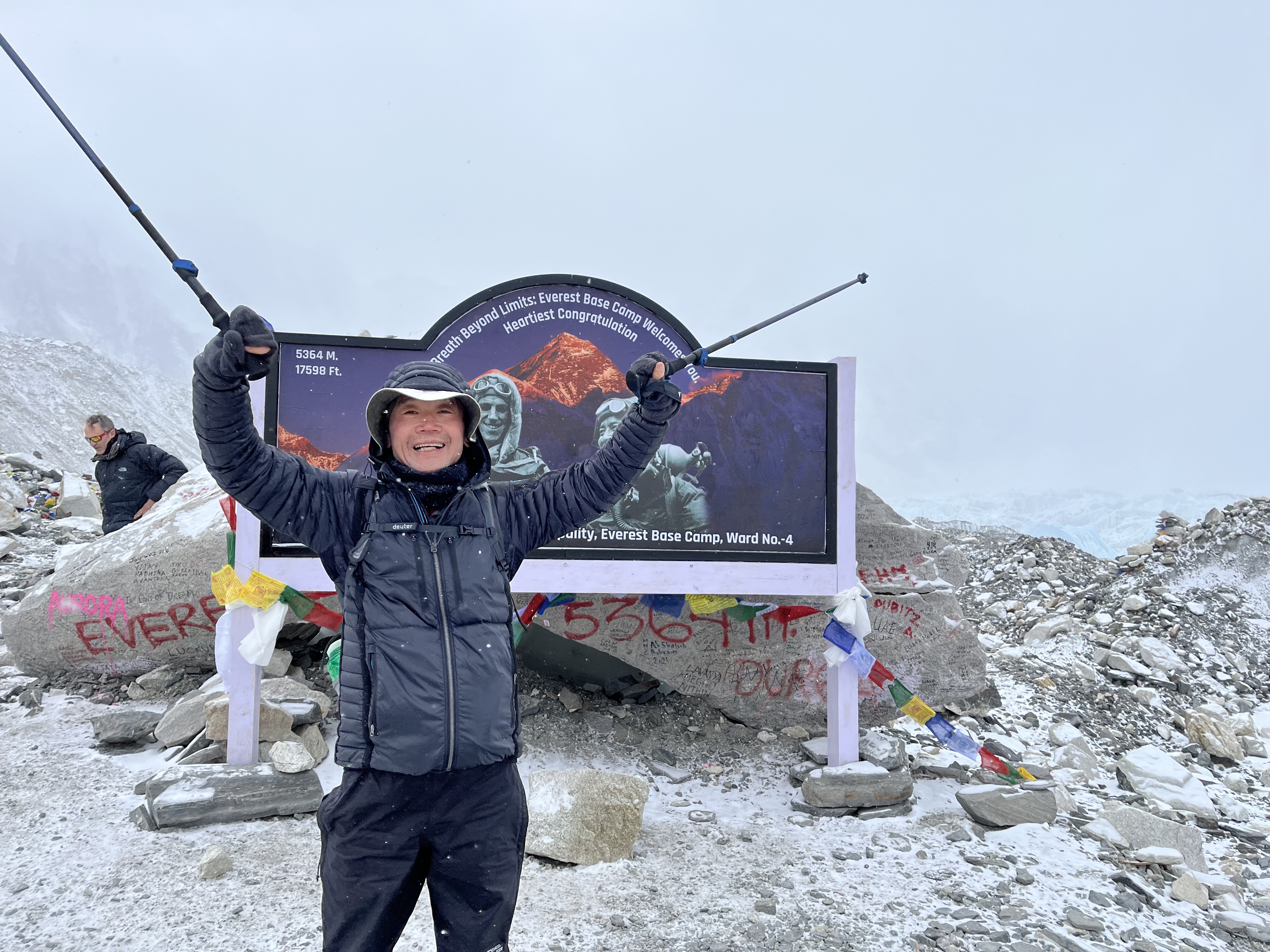Day 8: Lobuche - Gorakshed – Everest Base Camp – Gorakshed
We were told at dinner last night that today would be an early day: 6:30 for breakfast and set out at 7:00 for Gorakshed (5,140m/16,900ft), the last village on the hiking trail. Since EBC had no accommodation for hikers, after reaching Gorakshed, they would drop off their backpacks at a teahouse and then walk to EBC, about 3.5km/2.2ml away. They then would return to Gorakshed for the night.
I again had a porter carry my backpack and, in the strengthening snowstorm and by using the neck warmer to block the icy air intermittently, got to Gorakshed in less than two hours. My partner hadn’t felt well since the day before (he might have caught altitude sickness), but still suffered from bag separation anxiety, so he was behind and had to move up slowly. I waited a long time at Gorakshed before he turned up, but by then it had passed midday, and the storm was in full swing. I knew he knew he would not be able to press on, so I headed out to EBC alone in a world of intense wind and heavy snowfall. The heavy-hitting snowflakes hurt my face, but I found many like-mind hikers fighting their way to EBC. Our logic was as follows: If we did not go to EBC right away, the next day we might not be able to go down the mountain; then we would have to spend another freezing night at Gorakshed. If we rushed to return tomorrow without visiting EBC, then all the suffering we endured during this trip would seem pointless.
The ruggedness of the trail was covered with a fresh layer of snow. Hikers, porters, and the large convoys of transportation yaks and horses were all fighting to stay on the narrow trail. It was not unheard of that hikers were nudged off the cliffs by the animals for not getting out of the way in time, but few seemed to worry about this potential danger. Still, many porters lugging all sorts of heavy stuff, even building materials, machinery, furniture, and an espresso maker, struggled in the storm toward the base camp.
I again applied my crude technique of intermittently using the neck warmer to filter the sub-freezing airflow into the body. I didn’t know how long the wrestling lasted, but suddenly a vague view of some crowds and orange tents jumped out afar in the bend. Thank heavens! After so much work I was finally at Everest Base Camp! Believed I wet my eyes.
It was a total anticlimactic at EBC: There was almost nothing to signify this was the world’s most renowned campsite, other than a big stone with carved-in red letters “Everest Base Camp”, and in front of it, a wooden billboard with a photo of Sir Hillary and Sherpa Tenzing Norgay, the first humans to set foot on the top of Mount Everest in 1953. In the distance, over a half-dozen orange tents stood in the falling snow and howling wind. There was not a grand gate leading to the campsite, nor were there the cafeteria, bathroom, or other tourist facilities. I switched on my phone and prepared to call my family and friends regardless of what time it was in their respective time zones. And I was stunned there was no cell signal!
I started getting pictures taken in front of the rock and the billboard, and near which were a few people making video clips. A young man said emotionally to the mic “I have learned so many precious skills and best practices from my Nepalese colleagues during this expedition…” It seemed that he might have just gotten off the 8848.86m Peak! It was humbling to realize that having been to EBC was trivial when compared to what had been accomplished by so many…
The cold wind was seeping through my body; I had to make a move after torturing myself for another 20 minutes. On the way back I saw many people still coming in the late afternoon under gusting wind and heavy snowfall. I bumped into a few who I met on the trip; they congratulated me for having reached the destination.
The room was again icy cold at night, and I was also hit by the cumulated fatigue from multiple days. I prayed that there would be no visibility tomorrow so it was a no-brainer to start the return without scaling Kalapattar, a nearby peak of 5,643m/18,500ft from where Mount Everest can be viewed closely.
